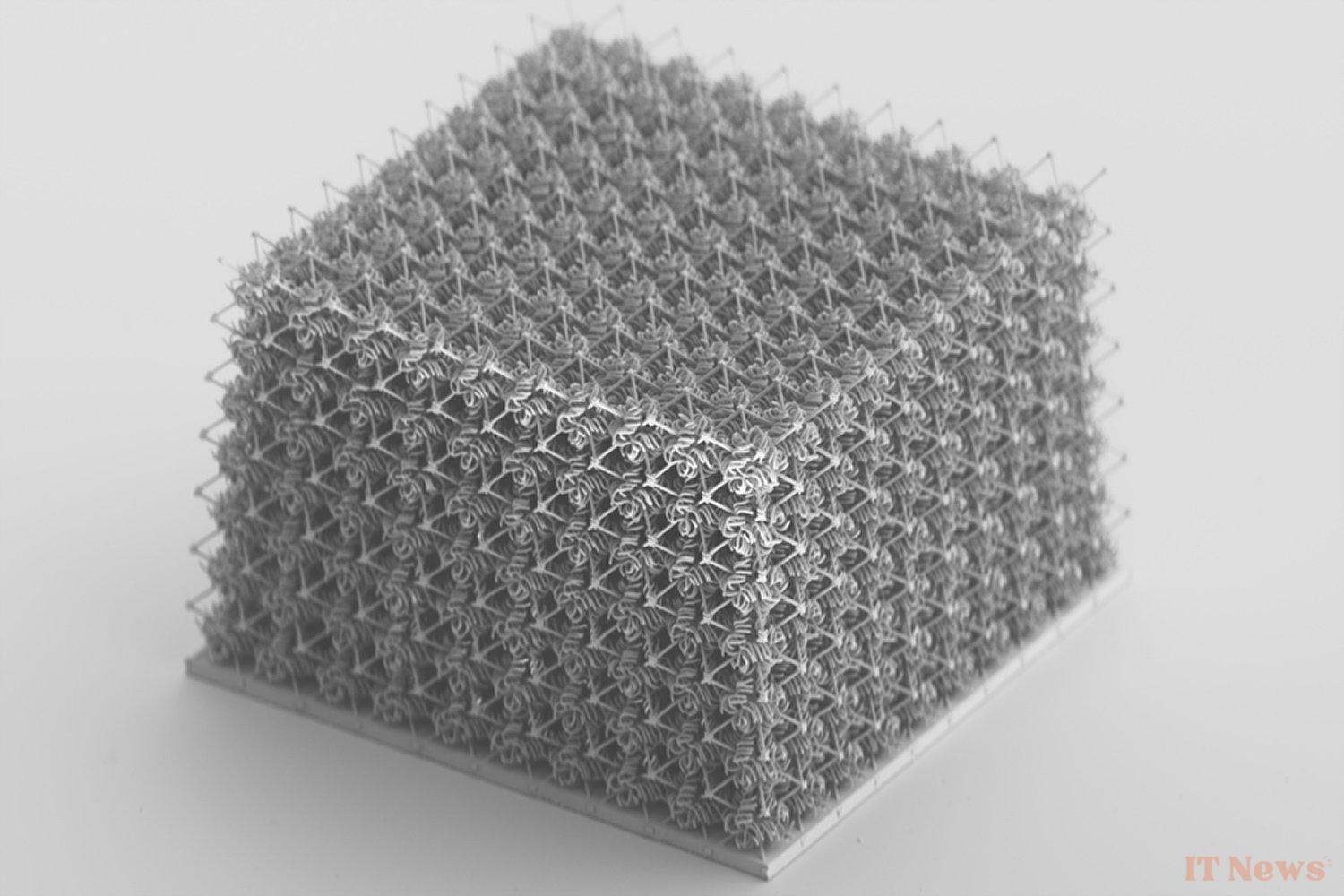A team of engineers from the Massachusetts Institute of Technology (MIT) has developed a new type of mechanical metamaterial, an artificial composite material with microscopic structures that give it unique properties and overcome the usual trade-off between rigidity, ductility, and extensibility. It could be used in the semiconductor and electronics industries, for example to design high-performance processors. at the same time resistant, flexible and stretchable that would fit on clothing or wearable accessories.
Towards foldable and unbreakable printed circuits
Imagined as a “mesh of spaghetti tangled around a lattice” (sic), this meta-material integrates a unique “double network” structure, mixing flexible polymers – woven or spiral – with a rigid structure to obtain high strength and stretchability. Both structures can be made from the same basic material (a plastic like plexiglass, a metal or even silicon at the base of our contemporary microprocessors) and are printed simultaneously at using a high-precision laser lithography technique.
The material's remarkable properties come from the interaction between its rigid elements and the more disordered spiral weave when the material is stretched. If the rigid lattice cracks or breaks, its broken parts become entangled with the woven lattice, leading to increased friction and greater energy dissipation. This improved energy dissipation then allows the material to stretch considerably before reaching its breaking point: up to three times its own length, ten times more than a material with a lattice structure alone. Counterintuitively, introducing structural defects can even improve the properties of this metamaterial; the additional stress dissipation and failure delocalization make it even more stretchable.
Potential applications for this novel metamaterial range from tear-resistant textiles to scaffolds on which cells can be grown for tissue repair. But it is the field of semiconductors that could mainly benefit from it: applied to chips, electronic components and printed circuits, this technology would make electronic assembly much more robust against physical or thermal deformation. Enough to dream of foldable, stretchable and almost unbreakable printed circuits... in a few years, by the time this technology leaves the laboratories.
Source: Nature




0 Comments